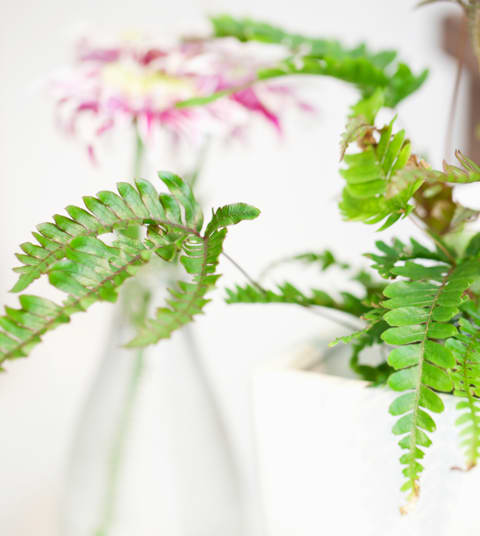Advertisement
7 Houseplants That Purify The Air (And Are Nearly Impossible To Kill)

Bringing plants indoors is a sustainable way to improve indoor air quality quickly. Yep, one commonly cited NASA study found certain plants to be useful in absorbing harmful gasses and cleaning indoor air.
Though houseplants won't clear the air nearly as much as, say, an air filter, they come with other bonuses too: They're aesthetically pleasing and can make us feel more connected to nature, content, and calm at home.
Here are seven detoxifying plant varieties that can tolerate moderate to low light levels. Consider them the building blocks of any great indoor jungle.
Boston Fern (Nephrolepis exaltata)

- Removes low levels of formaldehyde, xylene, and toluene from the air
- Thrives in moderate, indirect sunlight; high humidity
- Great for a hanging basket or planter on a pedestal or atop a shelf
Spider Plant (Chlorophytum comosum)

- Removes low levels of formaldehyde, xylene, and toluene from the air
- Thrives in moderate, indirect sunlight; cooler temperatures
- A great houseplant for propagating!
Pothos (Epipremnum aureum)

- Removes low levels of benzene, formaldehyde, xylene, and toluene from the air
- Thrives in moderate to low indirect sunlight
- Nicknamed "the cubicle plant" for its ability to grow in less-than-ideal environments
Peace Lily (Spathiphyllum "Mauna Loa")

- Removes low levels of benzene, formaldehyde, trichloroethylene, xylene, toluene, and ammonia from the air
- Thrives in moderate to low indirect sunlight
- Identifiable by its signature dark green leaves and white blooms
Chinese Evergreen (Aglaonema modestum)

- Removes low levels of benzene and formaldehyde from the air
- Thrives in low indirect light
- Available in an array of visually appealing varieties
Snake Plant (Sansevieria rifasciata)

- Removes low levels of benzene, formaldehyde, trichloroethylene, xylene, and toluene from the air
- Thrives in moderate to low indirect light
- Not only is the Sansevieria unbelievably hardy, but it converts carbon dioxide into oxygen at night. (Most other common houseplants only do this during the day.)
Philodendron (Philodendron)

- Removes low levels of formaldehyde from the air
- Thrives in moderate to low indirect light.
- A quick-growing trailing plant, Philodendron is known for its heart-shaped leaves
The takeaway
While houseplants can certainly help filter toxins from the air, they do so very gradually over time. If you suspect that your home has poor air quality, you should read up on the top chemicals of concern at home and how to get rid of them quickly.